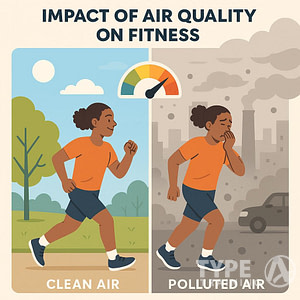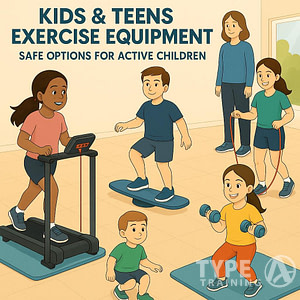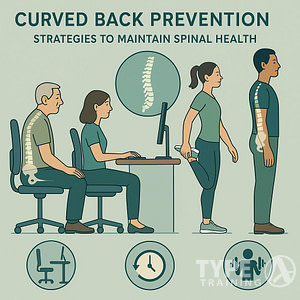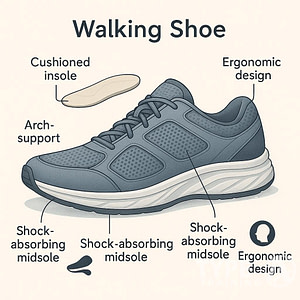In recent years, the fitness industry has embraced a significant shift towards sustainable and eco-friendly materials, with bamboo clothing at the forefront of this trend.
Bamboo clothing offers numerous benefits that make it an ideal choice for activewear, including its moisture-wicking properties, natural breathability, and antibacterial features.
As you explore the world of fitness apparel, understanding the advantages of bamboo fabric can help enhance your workout experience while supporting an environmentally responsible lifestyle.
Popular posts:
The cultivation of bamboo has a low environmental impact, as it grows rapidly without the need for fertilizers or pesticides, making it a highly renewable resource.
Fitness brands utilizing bamboo fabric are responding to increased consumer demand for ethical and sustainable products.
By choosing bamboo activewear, you are not only prioritizing your comfort and performance but also contributing to a greener planet.
With its rising popularity, bamboo clothing continues to capture attention in the market as both a sustainable and functional option for fitness enthusiasts.
Incorporating bamboo pieces into your workout wardrobe can transform your fitness routine while aligning with values of sustainability and eco-consciousness.
Key Takeaways
- Bamboo clothing enhances comfort and performance in fitness.
- Choice of bamboo supports sustainability and environmental responsibility.
- Demand for eco-friendly activewear is driving market trends.
The Rise of Eco-Friendly Materials in Activewear
Eco-friendly materials are transforming the activewear industry. A focus on sustainability is leading to increased adoption of environmentally friendly fabrics, which offer both performance and a reduced environmental impact.
Bamboo Fiber Properties
Bamboo fabric is gaining popularity in the activewear sector for its natural qualities.
Bamboo fibers are known for their breathability and moisture-wicking properties, making them ideal for intense workouts.
This fabric also has natural antimicrobial features, which help prevent odor buildup and maintain freshness.
Unlike synthetic fabrics, bamboo is biodegradable, reducing its environmental footprint.
The production process of bamboo fibers uses less water and chemicals compared to traditional synthetic fabric manufacturing, marking a shift towards more sustainable practices.
Comparison with Synthetic Fabrics
Synthetic fabrics like polyester and nylon have long been favored for their durability and stretch. However, their environmental impact is considerable due to high energy and resource consumption during production.
These materials are not biodegradable and contribute to plastic waste.
Bamboo fabric, on the other hand, offers a sustainable alternative. It matches synthetic fabrics in terms of performance but with a lower environmental cost.
As awareness of sustainable options grows, many consumers opt for bamboo-based activewear to align their purchases with environmental values.
Sustainable Fashion Movement
The sustainable fashion movement is driving innovations in eco-friendly activewear.
Increasing numbers of brands are investing in research to develop materials that minimize environmental harm.
This includes using recycled materials and natural fibers to create stylish and functional designs.
Eco-friendly activewear brands like Girlfriend Collective use recycled materials and implement ethical manufacturing processes.
As consumers prioritize sustainability, the activewear market is evolving to meet these demands, resulting in a dynamic shift towards more environmentally conscious products.
Benefits of Bamboo Clothing in Fitness
Bamboo clothing offers numerous advantages for fitness enthusiasts seeking eco-friendly and functional activewear. Its unique properties enhance comfort, durability, and performance, making it a superior choice for those aiming to improve their workout experience.
Thermoregulating and Moisture-Wicking
Bamboo fabric excels at both thermoregulation and moisture-wicking.
It naturally adjusts to your body temperature, keeping you cool in hot conditions and retaining warmth when it’s cold.
This temperature adaptability is particularly beneficial during high-intensity workouts or unpredictable weather conditions.
Moisture-wicking capabilities of bamboo fabric ensure that sweat is quickly absorbed and evaporated, keeping your skin dry.
This feature reduces the chance of irritation and discomfort, promoting a more pleasant workout experience.
These properties make bamboo clothing a great choice for both indoor and outdoor fitness activities.
Durability and Comfort
Bamboo clothing is known for its durability, which is essential for activewear that undergoes frequent washing and high-impact exercises.
The fibers in bamboo viscose are strong, maintaining the integrity of your garments over time, and preventing them from losing shape.
In terms of comfort, bamboo fabric is incredibly soft, often compared to cashmere or silk.
This softness provides a comfortable fit without causing chafing or irritation, even during prolonged physical activity.
Its breathability further contributes to comfort, allowing air to circulate and keeping you cool and comfortable.
Odor Resistant and Hypoallergenic
Bamboo clothing is naturally odor-resistant, a feature attributed to its antibacterial properties.
This resistance ensures that your clothes stay fresh, even after intense workouts, reducing the need for frequent washing.
Furthermore, bamboo fabric is hypoallergenic, making it suitable for sensitive skin.
It minimizes the risk of allergies and irritations, providing a safer option for those prone to skin reactions.
Environmental Impact of Bamboo Cultivation
When considering bamboo’s role in the fitness industry’s green movement, its cultivation processes present significant advantages. Bamboo is explored as a renewable resource known for rapid growth and low environmental impact, focusing on sustainable practices.
Bamboo Plant Characteristics
Bamboo is a unique plant recognized for its impressive growth rate, sometimes reaching up to 91 cm in a single day.
Its rapid growth contributes significantly to its sustainability. As a renewable resource, bamboo regenerates without the need for replanting, reducing soil erosion and maintaining soil health.
This plant thrives with minimal water and doesn’t require pesticides or fertilizers, making it environmentally friendly.
Bamboo’s dense root structure enhances soil stability, and its leaves return nutrients to the soil, promoting a balanced ecosystem.
Its cultivation is aligned with sustainable practices, reducing the need for chemicals and excessive water use.
Reducing Carbon Footprint and Waste
Bamboo stands out for its ability to significantly reduce the carbon footprint of various industries.
Its carbon sequestration capability is remarkable, as it absorbs more carbon dioxide compared to similar plants. This makes bamboo cultivation an effective tool in mitigating climate change impacts.
The use of bamboo also emphasizes reducing waste.
When incorporated into clothing, its fibers can be processed with less waste than conventional materials.
By utilizing every part of the plant, waste is minimized, supporting more sustainable production methods.
Market Trends and Consumer Demand
Bamboo clothing is gaining traction in the fitness industry, driven by sustainable practices and an increasing eco-conscious mindset. The market trends show significant growth, and consumer demand is shifting towards environmentally friendly options.
Growth of Bamboo Clothing Market
The bamboo clothing market is witnessing robust growth due to its eco-friendly attributes and comfort.
With a projected expansion at a CAGR of 6% to 9.1% by 2032, brands are investing in this space to cater to the increasing demand for sustainable options.
In 2022, the market value ranged from USD 1.3 billion up to USD 2.2 billion. By 2032, it is expected to reach between USD 3 billion and USD 4 billion, making it a lucrative segment.
This growth is attributed to the softness, breathability, and hypoallergenic properties of bamboo fabric. Its natural benefits are appealing to fitness enthusiasts seeking comfortable workout clothing.
Additionally, the rise of sustainable clothing aligns with the goals of brands focusing on circular and slow fashion, promoting longer-lasting apparel.
Eco-Conscious Consumers and Brands
Eco-conscious consumers are reshaping the fitness industry by prioritizing sustainability in their purchasing decisions.
They are leaning towards bamboo clothing due to its natural antimicrobial properties and minimal environmental footprint.
This shift is encouraging brands to integrate organic bamboo into their product lines.
Brands are adapting to consumer expectations by incorporating eco-friendly manufacturing processes and transparent supply chains.
They emphasize certifications to assure buyers of the authenticity of sustainable practices.
The demand for slow fashion is rising, with circular fashion gaining prominence.
These trends indicate a shift towards products that are not only high in quality but also environmentally responsible.
Incorporating Bamboo Clothing into an Active Lifestyle
Bamboo clothing blends comfort and sustainability, making it ideal for those committed to an active lifestyle. Its breathability and moisture-wicking properties enhance your performance while offering eco-friendly benefits.
Athleisure and Fitness Apparel
Bamboo fabric has become a popular choice for fitness apparel like yoga pants and shirts due to its unmatched softness and moisture-wicking capabilities.
Wearing bamboo yoga pants can keep you comfortable during intense workouts while naturally regulating your body temperature.
For those who embrace an athleisure lifestyle, bamboo t-shirts provide a stylish yet functional option for daily wear.
These shirts are antibacterial and odor-resistant, which is especially beneficial if you’re constantly on the go.
The versatility of bamboo clothing makes it easy to transition from the gym to casual settings without sacrificing comfort or aesthetics.
Brands like Boody are leading the way by offering eco-friendly clothes that blend performance with fashion.
Outdoor Gear and Performance Wear
When choosing outdoor gear, durability and performance are key factors.
Bamboo clothing, known for its strength and longevity, excels in these areas. It withstands the rigors of adventurous activities, whether you’re hiking or engaging in other outdoor sports.
Incorporating bamboo shirts into your outdoor wardrobe provides sun protection and comfort, while naturally resisting wear and tear.
The fabric’s ability to manage moisture and maintain breathability ensures that you stay dry and comfortable in various weather conditions.
Eco-conscious consumers will appreciate the sustainable impact of bamboo clothing, as it offers an environmentally friendly alternative to conventional outdoor gear.
By choosing bamboo activewear, you contribute positively to the world while enjoying high-quality performance and style.
Frequently Asked Questions
Bamboo clothing offers unique advantages for fitness enthusiasts, from its natural breathability and moisture-wicking abilities to its environmentally friendly production process. Here, the attributes of bamboo apparel and its practical benefits in the fitness industry are explored.
What are the benefits of wearing bamboo clothing during workouts?
Bamboo fabric is renowned for its excellent moisture-wicking properties. These properties help keep your skin dry during intense workouts.
Its natural breathability and temperature regulation provide comfort in various exercise conditions. Additionally, bamboo’s antibacterial properties can reduce odors and skin irritations, enhancing hygiene during activities.
Can bamboo clothing withstand the rigorous demands of fitness activities?
Bamboo fabric is durable and resistant to pilling and tearing, making it suitable for the rigorous demands of fitness activities.
Its smooth and silky texture reduces the likelihood of catching on edges or wearing out quickly, ensuring longevity in activewear.
How does bamboo fabric compare to synthetic materials in terms of moisture-wicking properties?
Both bamboo and synthetic materials offer moisture-wicking capabilities, but bamboo fabric excels due to its natural fibers.
This property helps to keep your skin dry and comfortable, making it a competitive alternative to synthetic options in the fitness apparel market.
In what ways is bamboo clothing considered a sustainable option for fitness apparel?
Bamboo clothing is considered sustainable as it is derived from a renewable resource. The bamboo plant grows quickly and requires fewer resources compared to other textile crops.
Its production process typically has a lower environmental impact, aligning with eco-friendly practices in the fashion industry.
Are there any specific care instructions for bamboo exercise clothing to maintain its performance features?
To maintain the performance features of bamboo exercise clothing, wash it in cold water with mild detergent and avoid using fabric softeners.
Air drying is recommended to preserve its natural fibers and prevent shrinkage, ensuring longevity and continued performance.
What are some well-known brands that specialize in bamboo clothing for both men and women in the fitness industry?
Several brands have made a mark in the fitness industry by specializing in bamboo clothing.
For instance, Boody offers eco-friendly bamboo garments for men and women.
Emphasizing sustainability and comfort, these brands provide stylish options for those seeking eco-conscious activewear.












